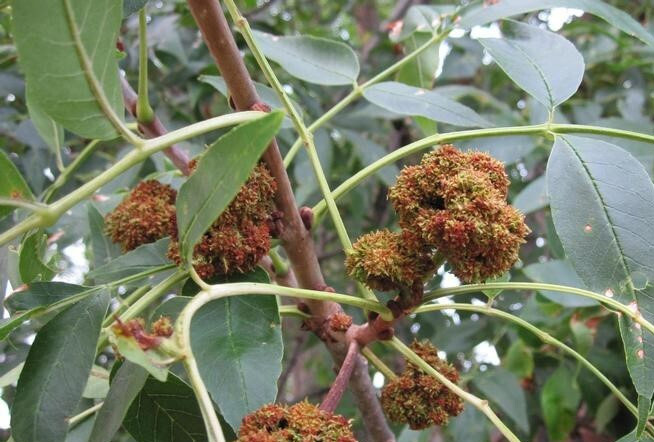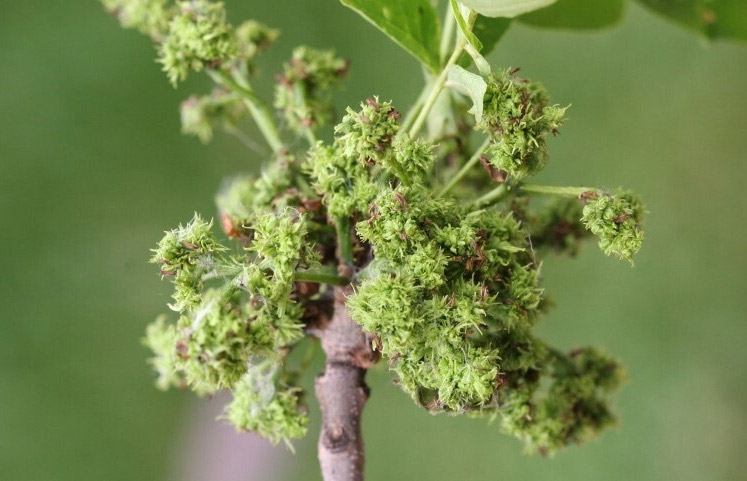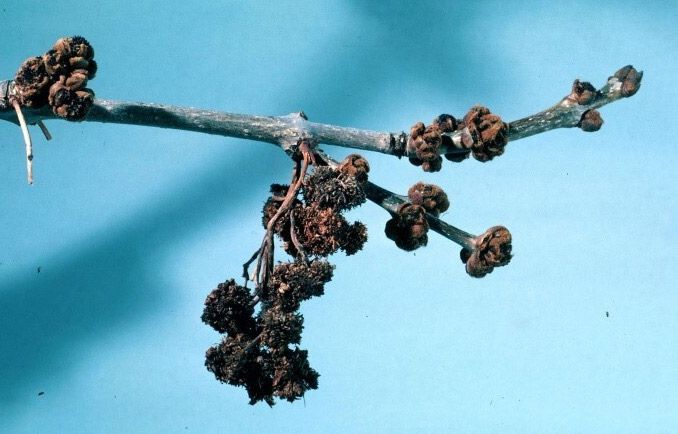Ash Flower Gall Mite (Eriophyes fraxiniflora)

Figure 1. Ash flower gall mite distortion during summer. Photo by D. O’Brien, Bugwood. Larger image.
Host
Ash trees
Damage and Symptoms
Damage is caused by a small, microscopic mite called an eriophyid mite. The mite distorts the male flowers of the ash. These galls are originally a greenish yellow color, but dry out and turn brown.

Figure 2. Ash flower gall mite early-season distortion. Photo by S. Katovich, Bugwood. Larger image.

Figure 3. Late-season galls from ash flower gall mite. Photo by A. Munson, USFS, Bugwood. Larger image.
Life Cycle
Female mites overwinter under bud scales and protected areas. In the spring, females actively feed and lay eggs on the buds. The male flowers disfigure and form gall-like tissue where the mites continue to develop. The mites leave these galls later in the summer and move to bud scales to overwinter.
Management
The pests are generally secondary and infest stressed trees. The galls rarely affect the health of the tree. Due to the protection of the mites within the galls, insecticide treatments are often minimally effective in controlling mite densities and often kill beneficial natural enemies of the mites. Larger trees are difficult to treat effectively. If chemical controls become necessary, a contact insecticide or miticide labeled for the host can be applied when the first blossoms appear. Also, a dormant oil can be applied prior to bud break.
Further Information
To learn more about the topics discussed on this page, contact the Schutter Diagnostic Lab. If you suspect an infestation on your property, contact your local extension agent, the Schutter Diagnostic Lab at Montana State University, or the Montana Department of Agriculture.
This ash flower gall mite fact sheet is also available as a printable PDF (334KB).
Disclaimer: These recommendations are provided only as a guide. It is always the pesticide applicator’s responsibility, by law, to read and follow all current label directions for the specific pesticide being used. The authors and Montana State University assume no liability resulting from the use of these recommendations. The Montana State University Extension Service is an ADA/EO/AA/Veteran’s Preference Employer and Provider of Educational Outreach.
